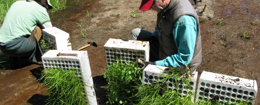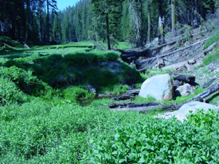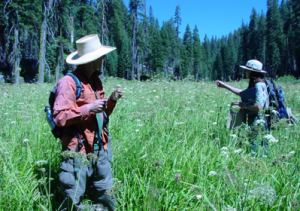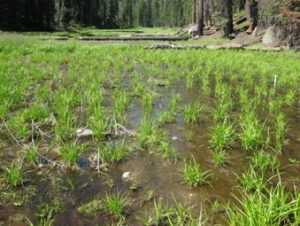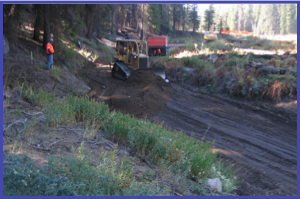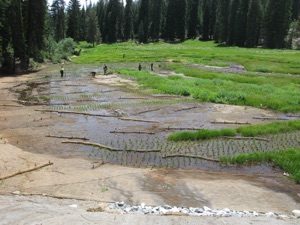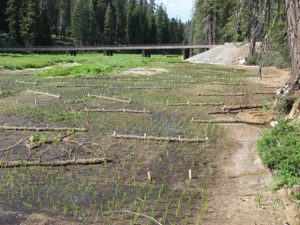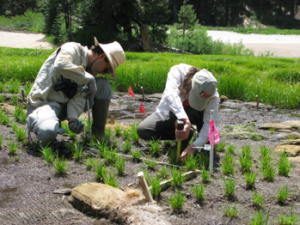The largest meadow crossed by the General’s Highway in Sequoia National Park is Halstead Meadow. It’s a steeply sloping feature with a deep and extensive gully that has drained most of the meadow allowing the dessication of meadow soils, invasion of pocket gophers and moles which have churned soil structure, caused the dieback of the dominant meadow plants (Scirpus microcarpus and Oxypolis occidentalis), and the establishment of plants that do not dominate wet meadows in the Sierra Nevada. Working cooperatively with Sequoia National Park restoration ecologist Athena Demetry and NPS Water Resources Division wetland scientists Joel Wagner, Evan Wolf and I studied reference meadows, developed concepts for meadow restoration, designed a pilot restoration program, and worked with collaborators to implement this program. The upper meadow, pilot, restoration effort was highly successful, and we learned critical lessons about meadow restoration design and implementation. We have also partnered with Federal Highways Administration to design the remaining meadow restoration, and the removal of highway fill, culverts (which contributed to the gully formation process), and design of a bridge across the meadow. A key element of the design is the restoration of a sheet flow hydrologic regime from top to bottom and side to side in Halstead Meadow. Once plants are established they can help stabilize soils and disperse water perpetuating the sheet flow and sediment dispersal and capture system. Final construction of the bridge and lower Halstead gully filling is slated for summer of 2011. The first two photos below show gullys in the upper (left) and lower meadow. The cascading water is from culverts under the Generals Highway. A bridge was built across the meadow to remove the road fill and culverts and allow a sheet flow of water to occur from the top to bottom of the meadow. All earthwork was completed in 2012, planting in 2013, and the monitoring program is ongoing.
Cooper&WolfHalsteadFinalReportMar2006
CooperWolfHalsteadRestorationPlan4
